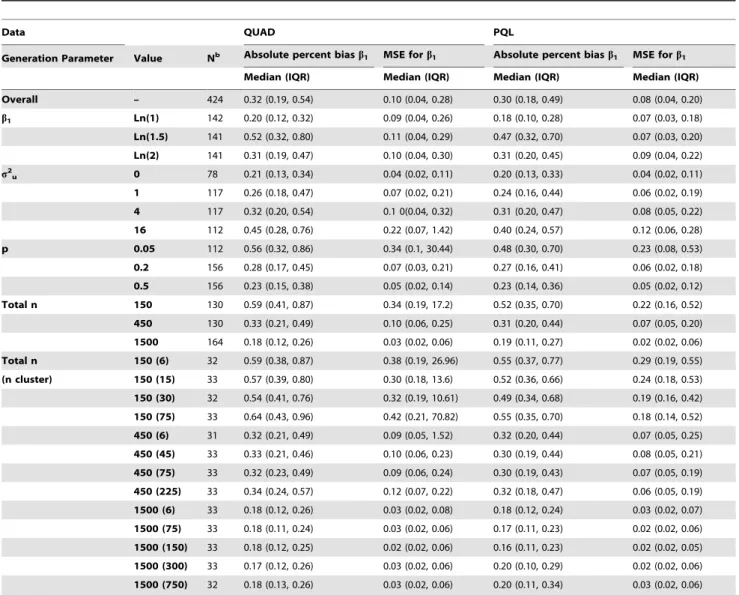Generalized Linear Mixed Models for Binary Data: Are Matching Results from Penalized Quasi-Likelihood and Numerical Integration Less Biased?
Texte intégral
Figure




Documents relatifs
Third, using a reformulation of the dependent variable, we improve the e¢ ciency of the two-stage quantile estimators by exploiting a trade-o¤ between an asymptotic bias con…ned to
The problem of handling missing data in generalized linear mixed models with correlated covariates is considered when the missing mechanism con- cerns both the response variable and
By construction, the method MI-PLS proposed by Bastien (2008) will not take into account the random effect and then for assessing the contribution of our method we have
Finally, instead of imposing Assumption 2’, one may …rst test for which coe¢ cients the hypothesis of constant e¤ect is rejected or not in typical quantile regression estimation, so
mixed models having constant variance ratios and heterogeneous log residual variances.. that are described by a
The Laplacian procedure for finding the mode of the marginal posterior distribution of a single variance component in a Poisson mixed model was found to be
A marginal quasi-likelihood approach to the analysis of Poisson variables with generalized linear mixed
The copyright holder for this preprint which was not peer-reviewed is the author/funder, who has granted bioRxiv a license to display the preprint in perpetuity.. It is made